When the pain begins to draw
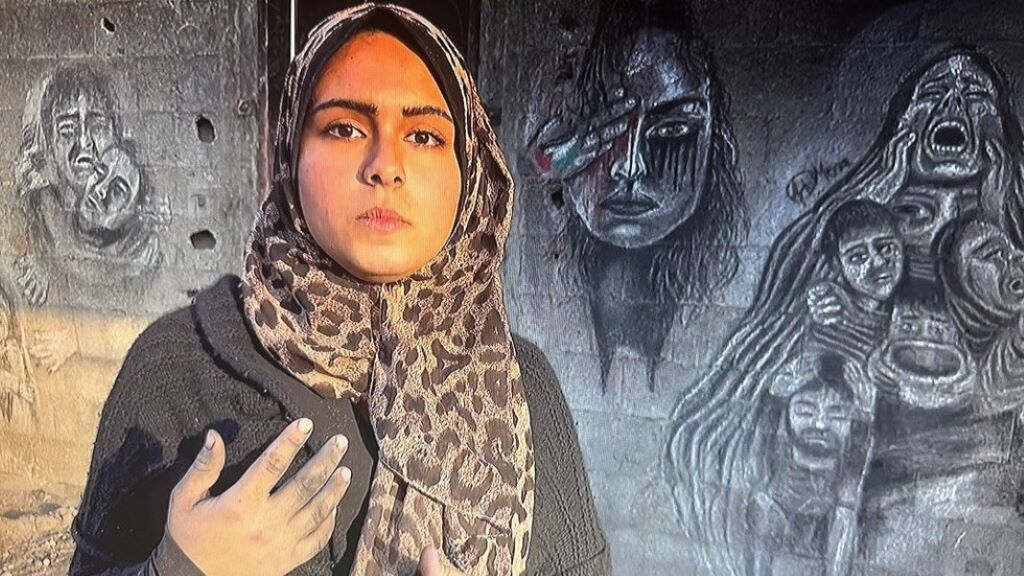
The portraits drawn on the walls of buildings in the Gaza strip by the young Palestinian artist Menna Hamouda are bleak: screaming women with children wrapped in shrouds, emaciated faces where it's unclear if the people are still alive or already dead. The combination of black charcoal and white chalk that the artist uses for her drawings adds extra layers to the work's overall sombre, rudimentary and existential nature.
Twenty-one-year-old Menna has experienced too much over the past five months. She has looked into the abyss too many times. She comes from Beit Lahia in the north of the Gaza Strip on the border with Israel. It was the first place to come under Israeli army fire following the Hamas attacks on southern Israel of 7 October.
Menna held out for six days in a place where today, there's barely a building left to speak of. Then the bombardment became too intense. "We just wanted to get out alive, that was our only goal," she recalls. They fled over 10 kilometres on foot to Gaza City, where they found refuge for another month in a school, before Gaza City became the focal point of the fighting and the Israeli army promised civilians a safe corridor to the south.
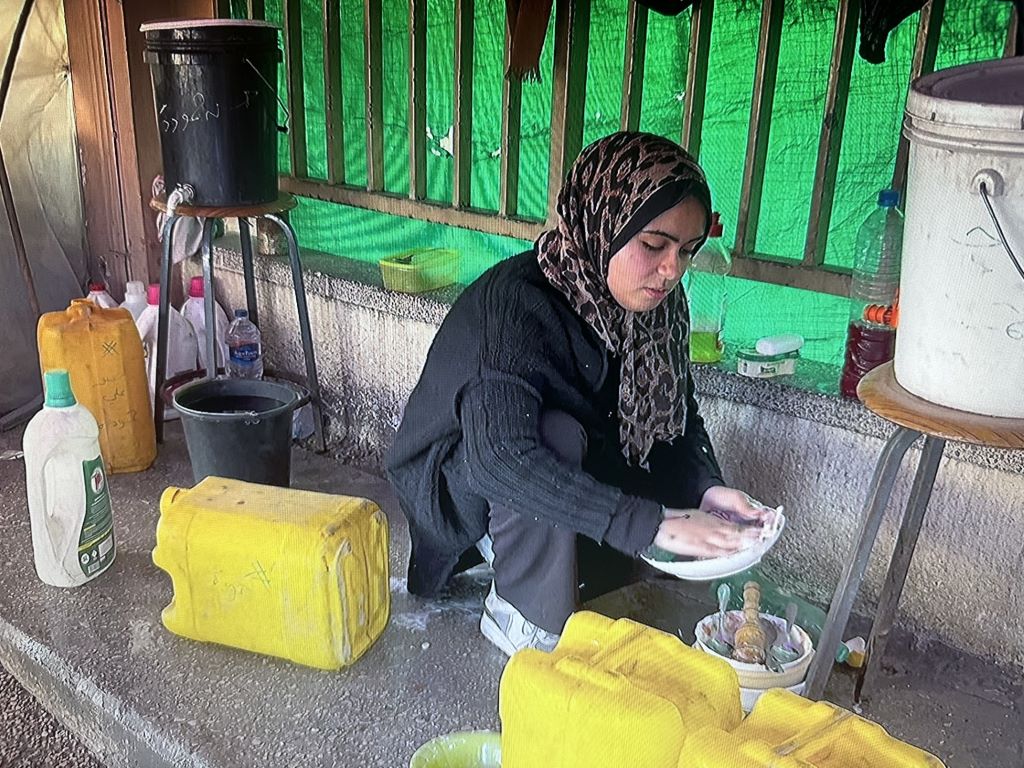
Nothing left of the old life
"That was a lie. There were tanks everywhere, shooting, bombs falling very close to us. Once again, it was a miracle that we survived and made it to Deir El-Balah," she says, looking back.
The city in the central Gaza Strip is now her new home; or more precisely her home is a tent where she lives with her family of six, including her father, paralysed by a neurological disorder before the war, who had to be pushed the entire time in his wheelchair. "I brought along nothing from my old life, only the clothes I was wearing and whatever I could carry," she says.
In her old life in Beit Lahia, Menna had a small studio where she taught others to draw. Art, for her, was first and foremost fun with vibrant colours and images. She shares photos and videos from this time on her smartphone. One shows a group under her instruction, drawing portraits of teenagers. Another video shows Menna painting the walls of a school pink and sky blue, with depictions of children laughing and playing. A smiling Menna looks back at the phone, smeared in paint.
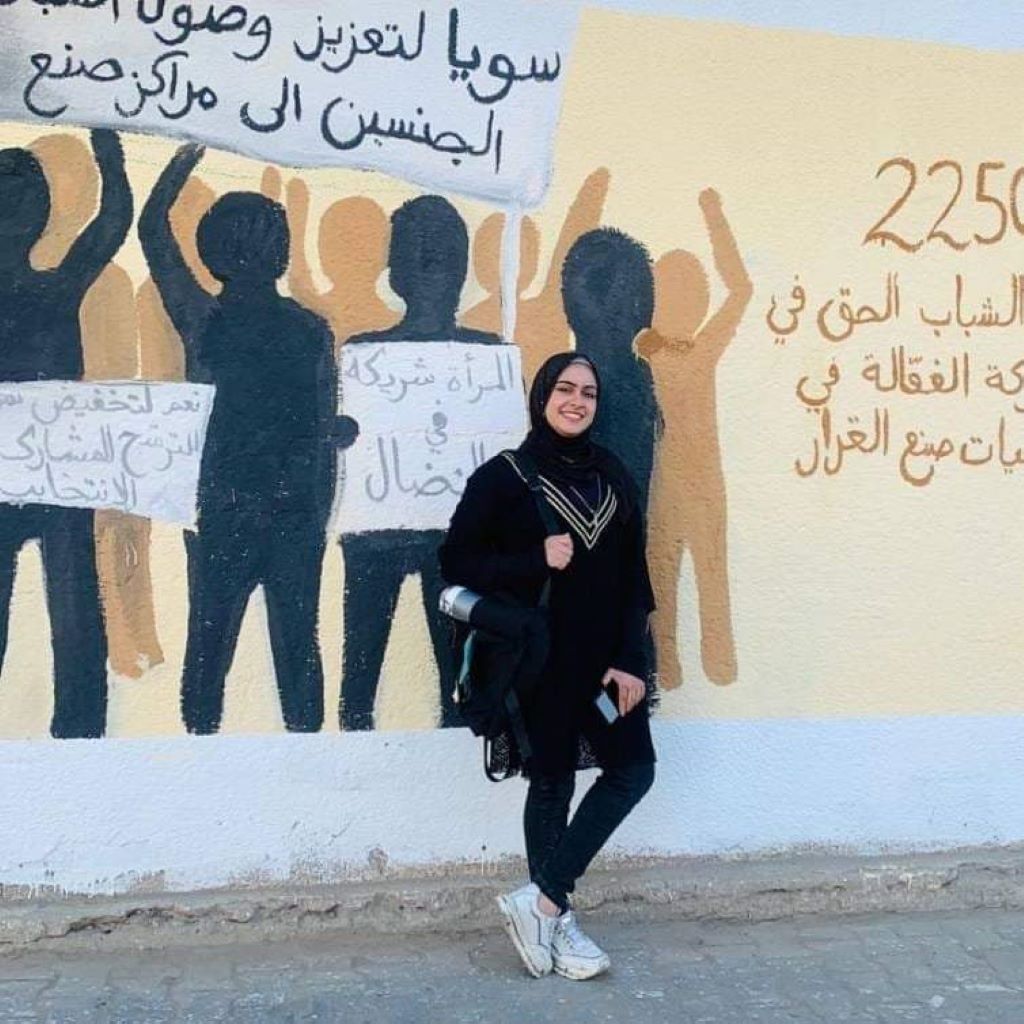
A life in fear
"Menna before the war was a girl full of optimism. She loved life and went out with her friends. She dreamed of local and international exhibitions," she says, talking about herself in the third person, sitting on the floor of her tent. Her old life is like a film that no longer has any meaning.
But Deir El-Balah isn't a safe place either. "Initially I thought we'd be protected here, but there are bombardments every day here too. Each time I fled, another part of me died, a thousand times over," she says. Menna is, like most people in the Gaza Strip, traumatised by what she has experienced and the prospect of an uncertain future.
"I've lost friends, my colleagues, many people whom I loved. Some are still lying beneath the rubble, others are injured. From others, there's been no news," she says, and adds: "I'm constantly afraid that I'll be next." She slips out of the third person for this sentence.
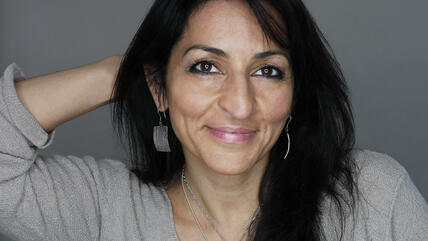
Love and suffering in Gaza
"The Blue Between Sky and Water" is the title of the new book by Palestinian-American bestselling author Susan Abulhawa. With her tried and tested concept of the dramatic family saga, Abulhawa also aims to make the suffering of the Palestinians visible. Laura Overmeyer read the book
The pictures show her experiences
"I'm an artist and I try to describe what I'm feeling inside and to capture all the negative energy of this place in pictures," she says and grabs her bag to go and work outside the tent. Because she had to leave all her art equipment and materials behind when she fled, she uses pieces of charcoal and chalk that she found in nearby schools.
"The chalk is intended for blackboards and not for the walls of buildings. But in the Gaza Strip, artists have to make do with what they can find to work with. The art we create doesn't just depend on what we can do, but also on what's available to us," she explains.
She'd like her drawings to be seen everywhere, that's why she goes out onto the streets and works on the walls of buildings. The images don't tell the stories of others, they depict her own experience, she explains. "I hear a lot of stories every day. They stay within me, in my head and in my heart, so many disturbing memories," is how she describes it.
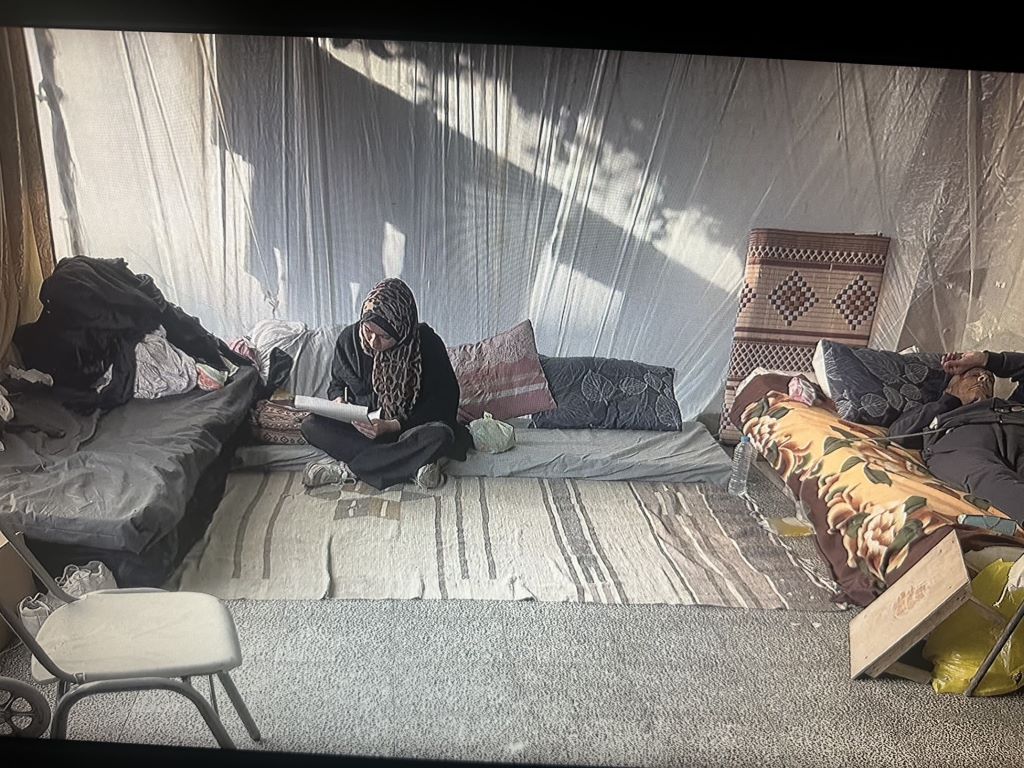
Her hair has already gone grey
And then she talks about her work using sentences like "this woman is crying and screaming at the same time" and "this boy has lost his entire family, he was the only survivor" or "this baby is three months old, it's dead." "This little girl is trying to find something to eat," she explains, or "this young man has worked hard and saved up to be able to afford an apartment and now he's sitting in front of the ruins of his home." These are the tragic stories written every day in the Gaza Strip and captured in portrait drawings on the walls of buildings.
And then she stands in front of her self-portrait. She's wearing a headscarf at the moment, but the portrait of the 21-year-old shows her loose, already-greying hair. Her gaze is fixed. One eye sheds black tears, the other is covered by a hand painted with a Palestinian flag. Underneath it, blood runs down her cheeks.
The artist describes her self-portrait with the following words: "She is strong, Menna tries to hide her pain. But at the same time, she tries to challenge all the pain that's inside her." There it is again, the third person.
It's a pain as profound as her pictures are bleak. It bears witness to dead people and orphaned children. A pain expressed by a woman who is just 21 years young. A strained artist's soul in the Gaza Strip after more than five months of suffering and war. With a young creativity where the light has been extinguished and where only the darkest side of life is showing its face.
© Qantara.de 2024
Translated from the German by Nina Coon
Note: This text is based on material supplied by a local camera-man in Deir El-Balah commissioned by the author to film and conduct interviews there. Only Palestinian journalists are currently working in Gaza. The only way for foreign journalists to access Gaza at the moment is with the Israeli army.
